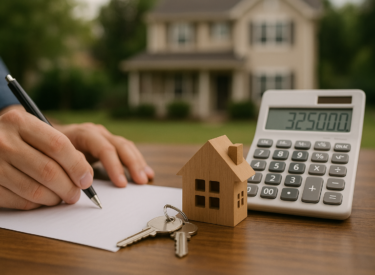It seems that green homes are easier to sell, according to Domain's annual Sustainability in Property Report.
Data from the report reveals that energy-efficient homes receive more attention from buyers nationwide, resulting in quicker sales compared to their non-energy-efficient counterparts (see Table 1).
Table 1 shows the difference in how long it takes to sell (days on market) and listing views from potential buyers between green homes and non-green homes across capital cities.
Table 1: Comparison of days on market and listing views between green homes and non-green homes
| Houses | Units | |||
| Days on market | Listing views | Days on market | Listing views | |
| Sydney | 0.0% | 27.0% | 0.0% | 20.4% |
| Melbourne | 0.0% | 34.7% | 0.0% | 15.1% |
| Brisbane | 0.0% | 18.6% | -4.8% | 15.5% |
| Adelaide | -5.0% | 52.9% | 2.7% | 9.7% |
| Perth | 2.2% | 17.8% | -4.0% | 1.2% |
| Canberra | 0.0% | 6.2% | 17.4% | -7.2% |
| Hobart | -5.9% | 14.8% | - | 0.8% |
| Darwin | -18.0% | 13.1% | -7.9% | -10.9% |
| Combined capitals | 0.0% | 16.5% | 4.3% | 0.8% |
| Combined regionals |
0.0% |
13.6% |
0.0% |
15.1% |
| Australia | -4.0% | 16.7% | 0.0% | 6.6% |
Remarkably, green homes attract over 16% more listing views and spend 4% fewer days on the market, indicating they get more attention and sell faster.
This also highlights a growing preference among Australians for environmentally friendly housing options.
Dr. Nicola Powell, Domain’s Chief of Research and Economics explains:
“This performance is likely driven by two major factors: an increasing number of environmentally conscious buyers, leading to greater demand for greener homes, and the lifestyle benefits associated with such properties.
Features like cross-ventilation, north-facing orientation, heat recovery ventilation, and solar panels not only contribute to environmental sustainability but also offer practical advantages, potentially reducing maintenance costs for occupants. Both lead to the increasing appeal of energy-efficient properties.”
The other standout trend is that middle-income families are leading the charge in adopting energy-efficient features, driving up the demand for green homes.
Considering that energy-efficient properties typically command higher prices, one might anticipate a proportionate representation of higher-income areas with suburbs featuring the highest energy-efficient house price premiums.
However, the report reveals a notable overrepresentation of middle-income households in most of these suburbs (see Table 2).
Table 2. Demographics of the top suburbs with an EE-house price premium by state.
| State rank |
Suburb |
State |
EE house price |
EE price premium | Annual household income |
Median age |
Greatest value-addin g feature |
| 1 | Mosman | NSW | $6,350,000 | 48.2% | $150,384 | 45 | Solar |
| 2 | Port Macquarie | NSW | $840,500 | 9.8% | $66,664 | 48 | Solar |
| 3 | St Ives | NSW | $3,010,000 | 9.1% | $150,176 | 43 | Double-Glaz ed |
| 1 | Reservoir | VIC | $1,100,000 | 48.0% | $80,132 | 38 | Solar |
| 2 | Preston | VIC | $1,190,000 | 24.6% | $95,888 | 37 | Solar |
| 3 | Coburg | VIC | $1,319,000 | 23.3% | $107,380 | 37 | Solar |
| 1 | Buderim | QLD | $1,290,000 | 38.0% | $89,908 | 46 | Solar |
| 2 | Thornlands | QLD | $1,140,000 | 36.5% | $115,336 | 36 | Solar |
| 3 | Coomera | QLD | $840,000 | 28.4% | $100,360 | 29 | Solar |
| 1 | Mount Barker | SA | $715,000 | 16.7% | $84,448 | 36 | Double-Glaz ed |
| 2 | Munno Para West | SA | $577,000 | 14.3% | $81,484 | 27 | Solar |
| 3 | Morphett Vale | SA | $645,000 | 9.7% | $62,384 | 40 | Solar |
| 1 | Como | WA | $1,250,000 | 53.4% | $92,560 | 38 | Solar |
| 2 | Aveley | WA | $700,000 | 19.5% | $112,580 | 31 | Solar |
| 3 | Alkimos | WA | $699,000 | 19.0% | $105,820 | 31 | Solar |
With average and median household incomes in Australia standing at approximately $121,000 and $93,000 respectively, this suggests a strong willingness among middle-income households to invest in energy-efficient features.
“There could be several factors at play here,” Powell suggests
She further explained:
“Middle-income households may be investing in energy-efficient (EE) features to lower their household running costs and align with their personal values of environmental consciousness.
Another explanation could be the prevalence of new-built homes in these areas with energy-efficient features included.
It is worth noting that with some of these suburbs being in regional areas, it shows Australians across all socio-economic demographics are motivated to make their homes more sustainable."
Davina Rooney, Chief Executive Officer of Green Building Council Australia concurred that:
"As Australians become increasingly aware of the health, environmental, and cost benefits of living in more sustainable and energy-efficient homes, we're naturally seeing a significant surge in demand for these properties.
This shift is particularly welcome, given that residential properties contribute to 10% of Australia’s carbon emissions.
It’s encouraging to see this growing preference, which promises to reshape our housing market."














